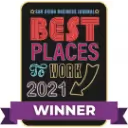Is your current human capital management (HCM) partner holding you back? Switching technology partners is a big decision. It affects your team, your clients and how you work every day. But sticking with a platform that no longer fits your business? That could be costing you more than you think.

Many administrative services organizations (ASOs), professional employer organizations (PEOs) and payroll service providers (PSPs) stay with outdated systems because switching feels overwhelming. Between managing client needs, tight deadlines, and nonstop tasks, change can feel like more risk than reward. But staying with a platform that’s not built for where you’re headed puts your reputation and growth at risk.
Sign 1: Your technology is outdated
Legacy systems had their moment, but today’s clients expect better. They want intuitive, modern solutions that update regularly and scale in tandem with their business. If your platform is clunky, rigid or missing core functionality, it’s doing more harm than good.
WHAT TO EVALUATE:
- How often does your provider release updates and new functionality?
- Do your clients or internal teams complain about the system?
- Are you losing deals to providers with stronger technology?
Sign 2: You're juggling too many disconnected systems
If your team has to toggle between tools just to complete everyday tasks, your workflow isn’t working. Separate systems for payroll, benefits, onboarding and time tracking create inefficiencies, data inconsistencies and compliance risks. A unified platform simplifies operations and increases confidence.
WHAT TO EVALUATE:
- Are you managing HCM tasks across multiple platforms?
- Can your clients and staff access what they need through one login?
- Is the user experience consistent and up to date?
Sign 3: You're missing the insights to move forward
You can’t guide clients without clear, actionable data. If your HCM platform doesn’t deliver real-time analytics, benchmarking tools and predictive insights, you may be falling behind the market. The right platform turns data into action.
WHAT TO EVALUATE:
- Are reports customizable and available in real time?
- Do you have access to benchmarking and industry comparisons?
- Are you using analytics to guide client strategies?
Sign 4: You're losing trust over security or compliance concerns

Your clients expect their data to be protected and their operations to stay compliant. If your provider isn’t investing in regular audits, risk assessments or providing transparency around safeguards, it puts your reputation and client trust at risk.
Only 30% of service bureaus say they are very confident in their current HCM partner’s data security.
WHAT TO EVALUATE:
- Does your provider publish their compliance policies and security certifications?
- Are they conducting ongoing internal and third-party risk assessments?
- Can you confidently communicate their practices to your clients?
Sign 5: The user experience is hurting your team
If your team is constantly working around your platform instead of with it, that’s a problem. Technology should simplify work, not create more of it. When the experience is slow or confusing, it drains productivity, morale and time.
WHAT TO EVALUATE:
- Is your team spending too much time troubleshooting the platform?
- Can new users onboard quickly and easily?
- Are client-facing tools intuitive and helpful?
Sign 6: You’re not getting the support you deserve
Your technology partner should feel like an extension of your team. If your support experience is slow, transactional or nonexistent, it may be time for a provider that prioritizes proactive, personalized help. A dedicated partner success manager should be part of the package.
WHAT TO EVALUATE:
- Do you have a dedicated point of contact who understands your goals?
- Are you receiving regular check-ins and business reviews?
- Is your partner aligned to your growth strategy?
Sign 7: You don’t have a seat at the table
You know your clients and business better than anyone. Your voice should shape the platform you rely on. If your provider isn’t welcoming feedback, involving you in roadmap discussions or connecting you to a peer community, they’re not treating you like a true partner.
WHAT TO EVALUATE:
- Do you have a voice in product updates or roadmap planning?
- Is there a community of service providers you can learn from?
- Are your ideas and feedback valued and acted on?
If these signs sound familiar, it’s time to take a closer look.
Let’s take the next step together. You don’t have to figure this out alone. We’ll help you evaluate your current platform, explore your options and make any transition feel less overwhelming.


.png)












